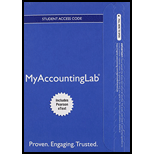
Concept introduction
Cash Ratio: Cash Ratio is a financial liquidity ratio that measures the ability of an organization to meet its short-term obligations with only cash and cash equivalents. It is measured as a ratio of total cash and cash equivalents to current liabilities.
Times-interest-earned Ratio: Times-interest-earned Ratio is a financial solvency ratio that measures an organization’s ability to meet its interest payments on debt with its available earnings before interest and tax. It is measured as a ratio of earnings before interest and tax (EBIT) to interest expense.
Inventory Turnover: Inventory Turnover is a financial efficiency ratio that indicates how effectively and efficiently an organization manages its inventory. It measures how many times an organization sells and replaces its inventory during a period. It is calculated by diving cost of goods sold by average inventory during a period.
Gross Profit Percentage: Gross Profit Percentage is a financial profitability ratio that shows the percentage of sales that exceed cost of goods sold. It is calculated by dividing gross profit which is net sales minus cost of goods sold, by net sales of a company for a particular period.
Debt Equity Ratio: Debt Equity Ratio is a financial leverage ratio that shows what proportion of debt an organization is using to finance its assets relative to shareholder’s equity. It is measured as a ratio of total debt to total
Return on Common Stockholders’ Equity: Return on Common Stockholders’ Equity (ROCE) is a financial profitability ratio that measures the ability of a company to generate profits with the money invested by its shareholders. It is calculated by dividing net income available to common stockholders by average common stockholders’ equity for a particular period.
Earnings per Share: Earnings per Share (EPS) is a financial profitability ratio that measures the amount of net income available to common stockholders earned on one share. It is calculated by dividing net income available to common stockholders by the average (or weighted average) number of shares outstanding during a period.
Price Earnings Ratio: Price Earnings Ratio is a financial ratio for valuing a company’s stock in the market that shows what the investors are willing to pay for $1 of the company’s earnings. It is measured as a ratio of market price per share of a company’s stock to the earnings per share for a particular period.
Requirement 1
To Compute:
The given ratios for 2015 and 2016.
Requirement 2
To Decide:
(a) Whether Dangerfield’s ability to pay debts and to sell inventory improved or deteriorated during 2016 and (b) whether the investment attractiveness of its common stock appears to have increased or decreased.
Trending nowThis is a popular solution!

Chapter 17 Solutions
MyLab Accounting with Pearson eText -- Access Card -- for Horngren's Accounting, The Financial Chapters (My Accounting Lab)
- Financial Accounting Question please answerarrow_forwardHow much of every retail sales dollar is made up of merchandise cost on these general accounting question?arrow_forwardThe company where Daniel works produces skateboards locally but sells them globally for $60 each. Daniel is one of the production managers in a meeting to discuss preliminary results from the year just ended. Here is the information they had in front of them: Standard Quantity per Unit Standard Price Wood 2.50 feet $4.00 per foot Wheels 5.00 wheels $0.50 per wheel Direct labor 0.30 hours $14.00 per hour Actual results: . • Quantity of wood purchased, 225,000 feet; quantity of wood used, 220,000 feet. Quantity of wheels purchased, 418,800 wheels; quantity of wheels used, 400,800 wheels. Actual cost of the wood, $4.20 per foot. Actual cost of the wheels, $0.55 per wheel. • Quantity of DL hours used, 26,400 hours; actual cost of DL hours, $15.20 per hour. Actual units produced, 80,000 skateboards. (a) Complete a variance analysis for DM (both wood and wheels) and DL, determining the price and efficiency variances for each; be sure to specify the amount and sign of each variance. DM- Wood…arrow_forward

 AccountingAccountingISBN:9781337272094Author:WARREN, Carl S., Reeve, James M., Duchac, Jonathan E.Publisher:Cengage Learning,
AccountingAccountingISBN:9781337272094Author:WARREN, Carl S., Reeve, James M., Duchac, Jonathan E.Publisher:Cengage Learning, Accounting Information SystemsAccountingISBN:9781337619202Author:Hall, James A.Publisher:Cengage Learning,
Accounting Information SystemsAccountingISBN:9781337619202Author:Hall, James A.Publisher:Cengage Learning, Horngren's Cost Accounting: A Managerial Emphasis...AccountingISBN:9780134475585Author:Srikant M. Datar, Madhav V. RajanPublisher:PEARSON
Horngren's Cost Accounting: A Managerial Emphasis...AccountingISBN:9780134475585Author:Srikant M. Datar, Madhav V. RajanPublisher:PEARSON Intermediate AccountingAccountingISBN:9781259722660Author:J. David Spiceland, Mark W. Nelson, Wayne M ThomasPublisher:McGraw-Hill Education
Intermediate AccountingAccountingISBN:9781259722660Author:J. David Spiceland, Mark W. Nelson, Wayne M ThomasPublisher:McGraw-Hill Education Financial and Managerial AccountingAccountingISBN:9781259726705Author:John J Wild, Ken W. Shaw, Barbara Chiappetta Fundamental Accounting PrinciplesPublisher:McGraw-Hill Education
Financial and Managerial AccountingAccountingISBN:9781259726705Author:John J Wild, Ken W. Shaw, Barbara Chiappetta Fundamental Accounting PrinciplesPublisher:McGraw-Hill Education





